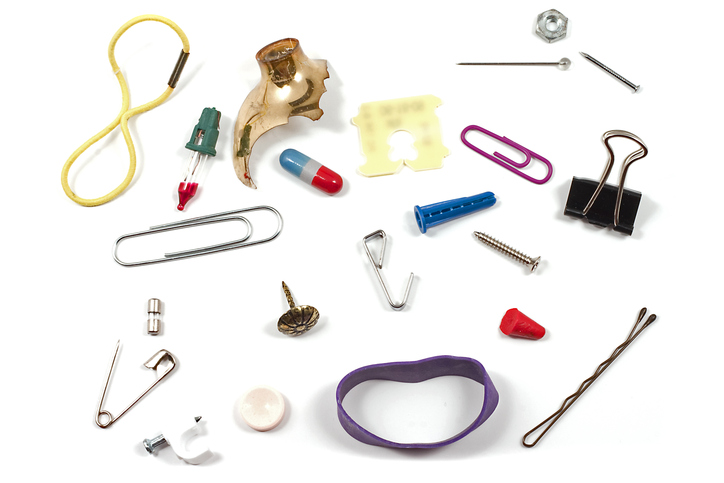Topics

Choking hazards can be anywhere, but being alert for small objects, such as coins, buttons, small toys and certain foods, can help you prevent your child from choking. Check under furniture and between couch cushions for small items that children could find, put in their mouth and potentially choke on. Be on the lookout for these choking hazards in your home and keep them out of your child’s reach.
Choking hazard items
Household items that are choking hazards and should be kept away from young children include:
- Coins
- Buttons
- Toys with small parts or toys that can fit entirely in a child’s mouth
- Small balls, marbles
- Balloons
- Small hair bows, barrettes, rubber bands
- Pen or marker caps
- Small button-type batteries
- Refrigerator magnets
- Pieces of dog or cat food
Choking hazard foods
To help prevent choking on food, cut food small enough, encourage children to chew properly and insist children sit down while they eat. The following foods are choking hazards and should be kept away from children younger than 4:
- Hot dogs
- Nuts and seeds
- Chunks of meat or cheese
- Whole grapes
- Hard or sticky candy
- Popcorn
- Chunks of peanut butter
- Chunks of raw vegetables
- Chewing gum
Responding to a choking emergency
There are a number of ways to respond to a choking emergency, but all begin with calling 911. When the brain does not receive oxygen for more than four minutes, permanent brain damage and even death can occur. If a child presents with complete airway obstruction (ie., is unable to speak or cough), dislodgement using back blows and chest compressions in infants, and the Heimlich maneuver in children older than one, should be attempted.
If your child is having difficulty breathing, but is still able to speak or has a strong cough (symptoms of partial airway obstruction), do nothing yourself but call 911 as a partial blockage can still cause complications. Your child’s cough is better than any back blows or abdominal thrusts you can administer; and performing these may convert a partial obstruction to a complete obstruction.
Every parent should complete a certified first-aid course where they learn the most up-to-date life-saving techniques like CPR, the Heimlich maneuver and the tongue-jaw lift.